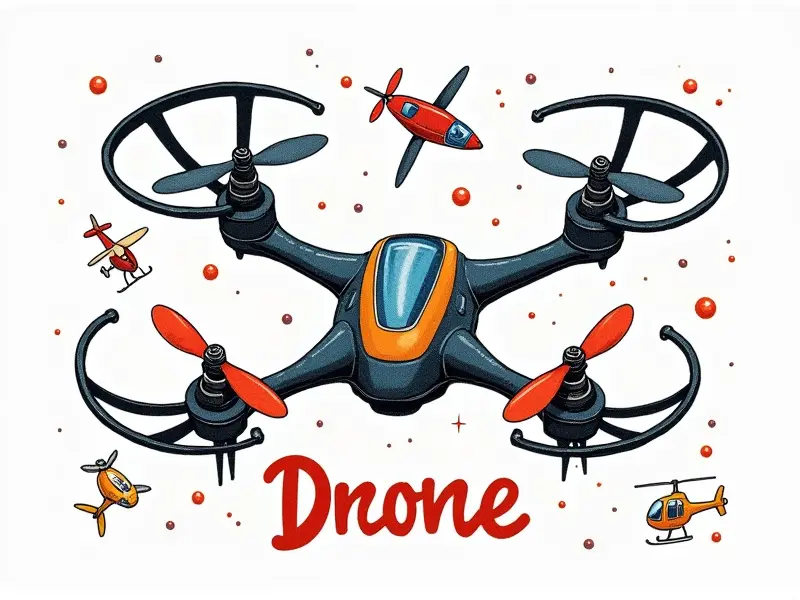What is an autopilot for drones?

Drones, also known as unmanned aerial vehicles (UAVs), have revolutionized the way we capture images and data from above. One of the key technologies that has propelled drones to new heights is the autopilot system. An autopilot for drones is a sophisticated software-driven control system designed to automate flight operations, enhancing both efficiency and safety. In this article, we will explore what drone autopilots are, their benefits, features, how they work, setup tips, future trends, and how to choose the right one.
How Autopilots Revolutionize Drone Flying
The advent of drone autopilot systems has transformed aerial photography and data collection. These systems allow drones to perform complex maneuvers without direct human intervention, making them invaluable in industries such as agriculture, construction, surveying, and filmmaking.
Benefits of Using Drone Autopilot Systems
- Safety: Autopilots reduce the risk of accidents caused by pilot error or fatigue.
- Efficiency: Automated flight paths and mission planning save time and resources.
- Consistency: Repetitive tasks can be executed with precision, ensuring consistent data collection.
Top Features in Modern Drone Autopilots
- Mission Planning: Pre-programmed routes and waypoints for efficient flight paths.
- GPS Navigation: Accurate positioning using satellite signals for reliable location tracking.
- Obstacle Avoidance: Advanced sensors to detect and avoid obstacles in real-time.
Understanding Drone Autopilot Technology Today
The technology behind drone autopilots involves a combination of hardware, software, and algorithms. Key components include GPS modules, inertial measurement units (IMUs), barometers for altitude control, and sophisticated flight control systems that integrate all data to manage the drone's movements autonomously.
What Does Drone Autopilot Actually Do?
An autopilot system takes over many of the tasks traditionally handled by a human pilot. It can perform takeoff, landing, waypoint navigation, and even complex maneuvers like acrobatic flips in FPV racing drones. The system uses real-time data from various sensors to maintain stability, adjust altitude, and follow pre-programmed flight paths.
Beginner's Guide to Drone Autopilot Setup
Setting up an autopilot for the first time can seem daunting, but it’s a straightforward process with the right guidance. Start by selecting compatible hardware that supports your chosen software platform. Install the necessary firmware and configure settings through a ground control station (GCS) application.
Future Trends in Drone Autopilot Technology
The future of drone autopilots is promising, with advancements like AI integration for smarter decision-making, improved battery technology for extended flight times, and enhanced communication systems for real-time data transmission. These innovations will further expand the capabilities and applications of drones.
How to Choose the Right Drone Autopilot
Selecting an autopilot depends on your specific needs and budget. Consider factors such as compatibility with your drone hardware, ease of use, available features, software support, and community resources for troubleshooting and updates.
Types of Drone Autopilot Systems
- Pixhawk: A popular open-source autopilot platform used in various commercial drones.
- Ardupilot: Another widely-used open-source solution known for its flexibility and customization options.
- DJI Flight Controller: Exclusive to DJI drones, offering seamless integration with their ecosystem of products.
Setting Up Your Drone's Autopilot
To set up your drone’s autopilot, follow these steps:
- Install the necessary hardware components and connect them properly.
- Download and install the appropriate firmware for your system.
- Configure settings through a GCS application like Mission Planner or QGroundControl.
Best Autopilots for FPV Racing Drones
For enthusiasts of first-person view (FPV) racing, certain autopilot systems stand out due to their performance and stability:
- Pixhawk: Offers robust flight control features essential for competitive racing.
- Bebop Autopilot: Known for its reliability in high-speed maneuvers and advanced telemetry support.
Conclusion
The integration of autopilots into drone technology has ushered in a new era of unmanned aerial operations. From enhancing safety to enabling complex missions, these systems are indispensable tools for professionals and hobbyists alike. As technology continues to evolve, the future holds even more exciting possibilities for drone automation.

